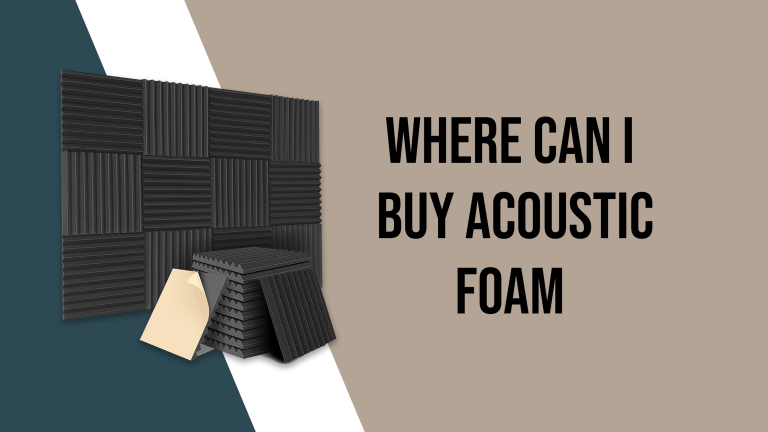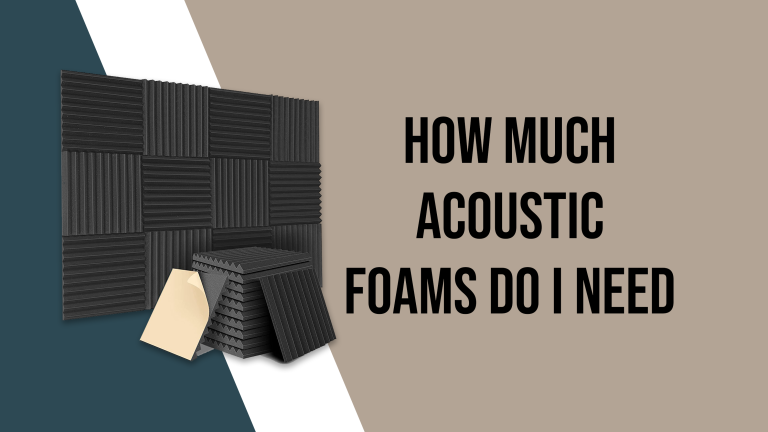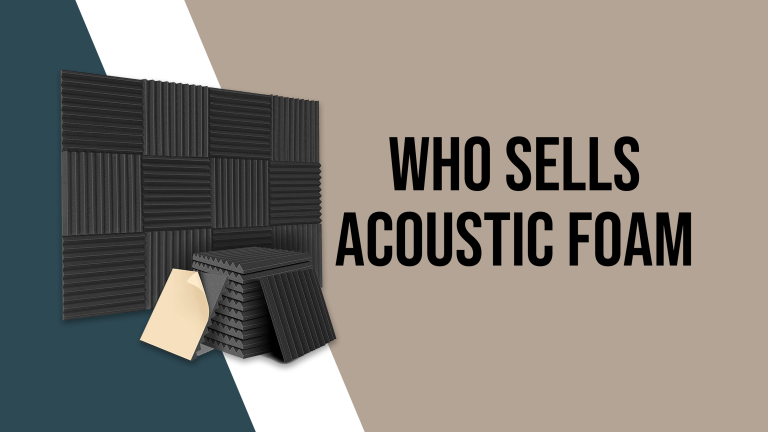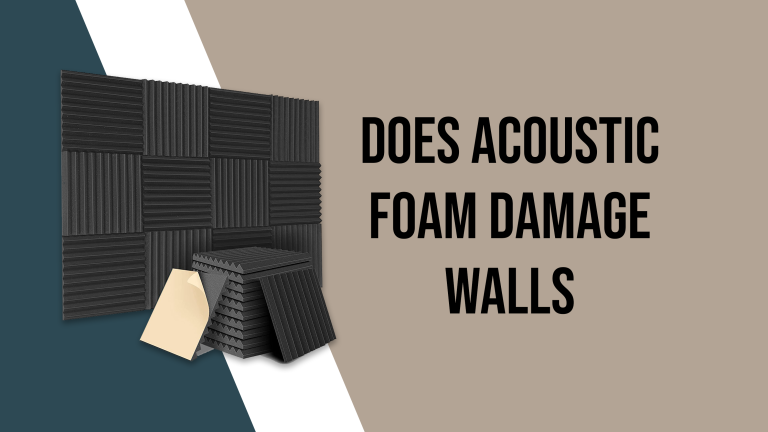How to Soundproof a Bedroom? 10 Easy Ways for a Peaceful Sleep
The bedroom is where you spend time. Loud neighbors, traffic, and city noise can disrupt your sleep. You are not alone. Many people can’t sleep because of unwanted noise. You can not completely stop the noise, but you can reduce it from coming into your home. Soundproofing your bedroom can help bring peace to your home. Here is a big question How to soundproof a bedroom?
Making your whole house soundproof can cost a lot, so let’s put our attention on the rooms you use the most. The good news is, you can make your bedroom quieter without spending too much money.
In this article, I will discuss 10 easy and affordable ways to make your sleeping space quieter and calmer.
Why to Soundproof a Bedroom?
You can actually control the noise that comes into and goes out of your bedroom. By using a few soundproofing materials, you can enjoy a quieter and more peaceful environment.
If you are wondering why soundproofing is beneficial, there are many reasons. You can’t control the noise your neighbors make, whether it’s noisy parties or loud music that keeps you up at night. When you soundproof your bedroom, you will finally get the peace and quiet you deserve.
Types of Sound
When it comes to how to make a bedroom soundproof, it’s important to understand the different types of sound you are dealing with because how you reduce each one can be different.
There are Two Different Kinds of Sound:
Airborne Noise:
This is the sound that moves through the air. Think of talking, TV or radio sounds, and music. When someone or something makes this kind of noise, it causes sound waves through the air until they hit something solid like a wall, floor, or ceiling. The sound goes through walls and you can hear it in the next room. For example, when you hear people talking in your basement while you are in the living room, that’s usually because of sound in the air.
Impact Noise:
Impact noise happens when something hits a solid surface and makes sound waves go right through that surface. This can be footsteps on a floor, something being dropped, or a ball bouncing. When you experience impact noise, you may also notice vibrations or shaking in the area where the noise is happening.
How Can I Soundproof My Room Cheaply?
To keep budget-friendly, you can try using egg cartons or foam mattress toppers on your walls to make echoes noiseless. You can also make your own sound panels with old towels or blankets covered in fabric. Another idea is to use white noise machines or fans to cover up unwanted sounds with calming background noise. These easy and affordable methods can really help make your room quieter and more relaxing for sleeping and relaxation.
Methods for Soundproofing Your Bedroom
To make your bedroom quieter, you can use soundproofing materials on the walls, around the doors, and under the flooring. These are just a few of the methods of how to soundproof a bedroom, you can use these methods to create a peaceful sleeping environment.
Keep Reading to Find Out More About Each of These Methods
Seal the Gaps
One of the easiest and most effective ways to reduce noise in your bedroom is by sealing any gaps or cracks. Sound can leak into your room through even the tiniest openings around windows, doors, and vents.
Here’s what you can do:
Weatherstripping: Install weatherstripping around your windows and doors to create a tight seal. This simple addition can reduce the amount of noise entering your room.
Door Sweep: Use a door sweep on the bottom of your bedroom door to block sound from underneath. It’s an affordable bedroom soundproofing solution that can make a big difference.
Caulk: Apply caulk to seal gaps around window frames, baseboards, and any other openings in your walls. This will stop sound from getting in or out.
That’s how to make a bedroom soundproof by yourself. Following these DIY steps have very little cost and they can provide decent soundproofing for your bedroom. However, if noise is still getting in and out, you can try some the below solutions. They are pricey, but much more effective for bedroom soundproofing.
Upgrade Your Windows
Windows are the weakest point when it comes to soundproofing a room. Single pane windows don’t do much to keep noise out.
Consider these window upgrades:
Thick Curtains: Hang heavy curtains that are designed to block sound. These curtains are made with multiple layers of fabric and can reduce noise transmission.
Double Glazing: If you have the budget for it, consider upgrading to double-glazed windows. These windows have two layers of glass with an insulating layer in between, providing excellent sound insulation.
Window Inserts: If replacing your windows is not an option, you can use window inserts. These are like secondary windows that fit inside your existing ones and provide an extra layer of soundproofing.
Use Soundproofing Materials
There are several soundproofing materials available that can be used to enhance the acoustics of your bedroom:
Acoustic Panels: These panels are designed to absorb sound waves, reducing echo and noise. You can easily install them on your walls or ceiling.
Acoustic Foam: While not as good as acoustic panels, foam can still help make sound softer and make your room sound better overall.
Mass Loaded Vinyl (MLV): MLV is a heavy, bendable material that you can put on your walls or under your floor to stop sound.
Add Soft Furnishings
Soft furnishings can help absorb sound, making your room quieter.
Consider these options:
Rugs: Place thick rugs on your bedroom floor to reduce sound reflections and footstep noise.
Plush Furniture: Choose furniture with upholstery and padding to absorb sound, instead than hard surfaces that reflect it.
Wall Hangings: Use fabric-based wall decorations to make your walls softer and reduce sound.
Rearrange Your Furniture
The way you arrange your furniture can impact sound transmission.
Here’s how to arrange your bedroom for the best setup:
Bed Placement: Position your bed away from shared walls to minimize noise from neighboring rooms.
Use furniture to block noise: Put bookshelves or big pieces of furniture against noisy walls to block the sound.
White Noise and Sound Machines
Sometimes, the way to beat noise is with more noise. White noise machines or sound machines can cover up outside sounds by making a calming, steady background noise. You can also use a fan or air purifier to do the same thing.
Soundproofing Doors
If noise is coming through your bedroom door, consider these options:
Door Sweep: As mentioned earlier, a door sweep can block sound from under the door.
Door Seal Kits: These kits come with sticky strips and foam insulation to make your door better at stopping sound.
Solid Core Door: If your budget allows, replace your core door with a solid core door, which naturally provides better sound insulation.
Manage Noisy Electronics
Electronics such as TVs, gaming consoles, and stereos can make your bedroom noisy.
Try these solutions:
Use Headphones: When you watch TV or play games, use headphones to keep the sound in your ears and not disturb others.
Media Center: If you have a media center, add acoustic foam or materials to the interior to reduce noise.
Use a Draft Stopper
To block out airborne noise from entering a room, you can use a draft stopper placed at the bottom of the door. Draft stoppers, usually fabric tubes filled with heavy materials, are commonly used to stop cold air from entering your home during the winter.
You can buy a draft stopper, or you can create one by filling a long sock with beans or a similar material and then sealing the end with a knot.
Add Some Mass to Walls
Use Thick Blankets: These are low-cost options that help absorb sound and avoid it from bouncing around the room.
Mass Loaded Vinyl: Mass loaded vinyl is a flexible material designed for noise control. It comes in 4-foot wide rolls for easy home application. It’s effective at reducing noise.
Extra Drywall: Adding an extra layer of drywall to your walls can help block out sound.
Use Sound Clips: These are specialized hardware that can help reduce sound transmission through the walls.
Consider Professional Help
If noise is still a big problem, and you can’t figure out how to make your bedroom soundproof, think about talking to a sound expert. They can check situation and suggest more advanced solutions, like building a noise blocking wall inside your home.
Tips for Better Soundproofing Results
Before you start a soundproofing project or purchase any soundproofing materials, there are many important factors to consider ensuring you get the best results:
Type of Noise: Think about the type of noise you are dealing with. Is it noisy all the time, consistent, or does it happens from time to time? Understanding the nature of the noise will help you choose the most effective soundproofing solution. You don’t want to invest in materials that won’t make a noticeable difference.
Pros and Cons: Think about the advantages and disadvantages of the soundproofing techniques you’re thinking of. DIY approaches are usually cheaper but might not work as well as professional choices such as double glazing. Be realistic about your expectations and budget.
Considerations: Think about how the soundproofing materials will look in your space. Some options, like mass-loaded vinyl, might not be visually appealing. Acoustic panels, although effective, might not fit your decor. Decide if you are fine with these changes.
Ratings: Look at the Sound Transmission Class (STC) ratings of soundproofing products. A higher STC rating means better noise reduction. Compare various products to find the one with the best performance. Remember that small differences in STC ratings, especially within a range of 3 or lower, may not be worth a significantly higher cost.
By carefully considering these factors, you can make decisions about your soundproofing project and choose the most suitable materials and methods for your specific needs.
How to Soundproof a Basement Bedroom?
Soundproofing a basement bedroom can present unique challenges compared to a room on an upper floor because basements commonly have lower ceilings and potential issues to consider.
Firstly, when you soundproof the basement bedroom properly for band practice, you may no longer be able to use it as a bedroom due to building safety regulations. For example, you might need to remove a window that serves as an emergency fire exit, which is a crucial safety feature.
Secondly, it’s a misconception that only soundproofing the ceiling is sufficient. Sound can still transfer through the walls and floor, causing noise to move upstairs. This situation, called flanking, highlights how making soundproofing work can be complicated and costly.
A step by step guide on how to soundproof a basement bedroom effectively:
Decoupling
Decoupling is a soundproofing technique that involves creating an air gap between two surfaces, using air as a sound-blocking barrier. However, when it comes to decoupling a ceiling, there’s a trade off, especially in basement bedrooms with low ceilings. Many basements have ceilings that are not very high, commonly around 8 feet or less. If you choose to decouple the ceiling, you might have to give up a few inches of this already limited space.
Absorption
Absorption is another important part of soundproofing a room, especially in a basement used for band practice.
To do this, you can follow these steps:
Fill Gaps: Start by filling the gaps between the ceiling joists with loose fiberglass insulation. While insulation alone may not offer complete soundproofing, it helps prevent the walls from vibrating when you are playing your instruments.
Sound Vibration: The insulation also helps dissipate sound vibrations as they move through the fibers of the insulation material. This can reduce the transmission of noise to other parts of the house.
Low Density Insulation: When choosing insulation materials, go for low-density fiberglass insulation because it’s better at absorbing sound. Higher density insulation might not be as good at reducing sound transfer.
Damping
Damping is the fourth element of soundproofing and can be effective in reducing noise. Constrained layer damping, in particular, is a method that transforms the moving energy of sound vibrations into heat energy, which helps to effectively get rid of the sound. One cost-effective solution for damping is to use a product like Green Glue. You can apply it between two layers of drywall. The good thing about this method is that it makes things quieter without taking away space in the room.
Different and Cheapest Way to Soundproof Between Floors:
When it comes to soundproofing between floors, there are different methods to consider, each with its own advantages and cost considerations.
Here are some different and cost effective ways to soundproof between floors:
Drop Ceiling: If you have a drywall ceiling, it can be challenging to insulate it from above without removing something. In such cases, a drop ceiling can be a better option. It’s relatively easy to remove ceiling tiles and install soundproofing materials without much difficulty.
Completely Unfinished: An unfinished basement ceiling provides the most flexibility for soundproofing. Because everything is visible, you can begin from the beginning and easily set up soundproofing materials without having to work around existing structures.
Acoustic Insulation: Using acoustic insulation materials in the ceiling can also be effective. Fiberglass or mineral wool insulation can be added between the floor joists to absorb and block sound.
Mass Loaded Vinyl: One cost effective soundproofing material to consider is mass loaded vinyl. It can be installed between the existing ceiling and the new drywall or drop ceiling, helping to reduce noise transmission.
Green Glue: Similar to mass loaded vinyl, Green Glue can be applied between layers of drywall to reduce sound vibrations.
How to Soundproof a Bedroom for Music?
If you are passionate about making music or playing instruments in your bedroom but worry about disturbing others or want to keep outside noise from interfering with your creative process, soundproofing your bedroom can be a great solution. Soundproofing a bedroom for music doesn’t have to be complicated or expensive.
Here are some simple and cost effective ways of how to soundproof a bedroom for music to do it.
Soundproofing can be a significant challenge for musicians who need a quiet space for practice or recording, especially when living in shared spaces like apartments, and houses. The good news is that there are effective soundproofing solutions available, and many of these methods are simple for people with basic DIY skills.
Whether you are dealing with a noisy environment or trying to be considerate of others, understanding the right soundproofing materials and methods can help you create a more peaceful and harmonious musical space.
Noise Sources: Before you start soundproofing, it’s important to find the sources of noise. Decide if you want to stop sound from leaving your room or block external noise. Your approach can differ depending on your goal.
Add Heavy Curtains: Hanging thick, heavy curtains over windows can help absorb and block external noise. Look for curtains designed for soundproofing or choose curtains with multiple layers to enhance their sound absorption.
Window Inserts: If you want to block external noise without blocking natural light, window inserts can be a good option. These are like additional windows that fit inside your current ones, giving you an extra layer of soundproofing.
Seal Gaps: Sound can easily move through gaps in doors, windows, and walls. Use weatherstripping, door sweeps, and caulk to seal these openings. This simple step can make a big difference in reducing noise leakage.
Soundproof the Walls: To reduce sound passing through walls, you can make them heavier. Alongside professional soundproofing options, you can also use mass loaded vinyl (MLV) or acoustic drywall. These materials are easy to install and can reduce noise.
Use Acoustic Panels: Acoustic panels are designed to absorb sound and reduce echo within a room. You can install them on the walls and ceiling to enhance the acoustics of your bedroom.
Use Area Rugs: Adding thick rugs to your bedroom floor can help reduce sound reflections and footstep noise. Rugs with padding are effective.
Build a Vocal: If you are recording vocals or instruments, consider creating a small vocal booth within your bedroom. You can use portable acoustic panels or even build a DIY booth with soundproof materials.
Soundproof the Ceiling: If you are worried about sound moving between floors, add acoustic ceiling tiles or drywall with acoustic properties to the ceiling. This can help block out noise.
Keep in mind that achieving complete soundproofing may be challenging without professional help, but these methods can enhance the acoustic quality in your bedroom for music. Customize your soundproofing efforts based on your specific requirements and budget, and enjoy making music without worrying about disturbing others.
How Much does it cost to Soundproof a Bedroom?
If you want to know how much does it cost to soundproof a bedroom, it can vary based on several factors. Generally, the price range can vary significantly, from a few hundred dollars to a thousand dollars. The ultimate cost depends on the level of soundproofing you desire and the methods you choose. You can go for a budget friendly option by weatherstripping doors, using thick curtains, or laying down rugs to absorb sound.
Conclusion
A peaceful and quiet bedroom is important for a restful night’s sleep. I hope your problem how to soundproof a bedroom for a restful sleep is resolved by employing these simple and budget friendly methods mentioned above. Don’t forget, you can use these methods in any combination that works for you and your budget. Enjoy your quieter, more peaceful sleep.
You can also read: How to Soundproof a Closet?
FAQs
How do you soundproof an existing bedroom?
Many people commonly ask how do you soundproof an existing bedroom. The simple answer is soundproofing an existing room is possible. Although it’s usually simpler to include soundproofing measures during construction or renovation, there are many choices for adding soundproofing to a room that’s already built. You can use materials like acoustic panels, weatherstripping, draft stoppers, and rugs to reduce noise transfer.
What is the cheapest way to soundproof a bedroom?
The most cost-effective way how to completely soundproof a bedroom is by using basic DIY techniques and affordable materials. Some budget-friendly options include adding heavy curtains, using rugs or carpets, sealing gaps around doors and windows, and applying weatherstripping. These simple measures can reduce noise without costing you much.






